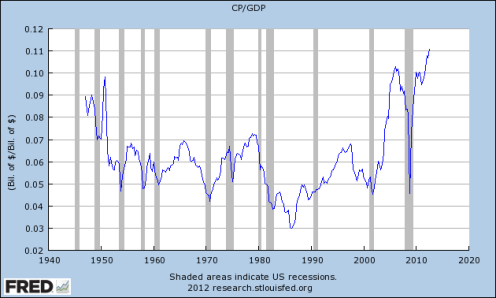Union Membership Hits New Low
From the Associated Press:
Union membership plummeted last year to the lowest level since the 1930s as cash-strapped state and local governments shed workers and unions had difficulty organizing new members in the private sector despite signs of an improving economy.
Government figures released Wednesday showed union membership declined from 11.8 percent to 11.3 percent of the workforce, another blow to a labor movement already stretched thin by battles in Wisconsin, Indiana, Michigan and other states to curb bargaining rights and weaken union clout.
Lowest since the 1930s? Maybe it isn’t a coincidence that low union membership rates lead to extremely weak economies.
The picture is even worse for the private sector.
But unions also saw losses in the private sector even as the economy created 1.8 million new jobs in 2012. That membership rate fell from 6.9 percent to 6.6 percent, a troubling sign for the future of organized labor, as job growth generally has taken place at nonunion companies.
Union membership peaked in 1953 at 28%. That year, the unemployment rate was 2.5%. Today it’s down to 11.3% and the unemployment rate is 7.8%. So much for the belief that unions kill jobs! What many people forget is that union employees are also consumers. When union membership declines, so do wages. But when wages fall, workers have less disposable income. This leads to lower consumer demand – and consumer demand is ultimately what creates jobs.
Many people also forget that no union contract can be forced onto any employer. All unions do is give employees more bargaining power. The father of capitalism, Adam Smith, understood that even when employees are unionized, employers still have the upper hand in negotiations. Unions don’t level the playing field, they just make it less uneven.
“What are the common wages of labour, depends everywhere upon the contract usually made between those two parties, whose interests are by no means the same. The workmen desire to get as much, the masters to give as little as possible. The former are disposed to combine in order to raise, the latter in order to lower the wages of labour.
It is not, however, difficult to foresee which of the two parties must, upon all ordinary occasions, have the advantage in the dispute… A landlord, a farmer, a master manufacturer, a merchant, though they did not employ a single workman, could generally live a year or two upon the stocks which they have already acquired. Many workmen could not subsist a week, few could subsist a month, and scarce any a year without employment. In the long run the workman may be as necessary to his master as his master is to him; but the necessity is not so immediate.”
Given the fact that employers have the upper hand in negotiations – even when employees are unionized – it’s no wonder that corporations are getting everything they want in this low union membership environment; government bailouts, tax payer funded sports arenas, free trade agreements, tax credits, Right-to-Work laws, etc. The result of all this corporate power hasn’t done a thing to create jobs. But it has led to record high profits.

Comments are closed.